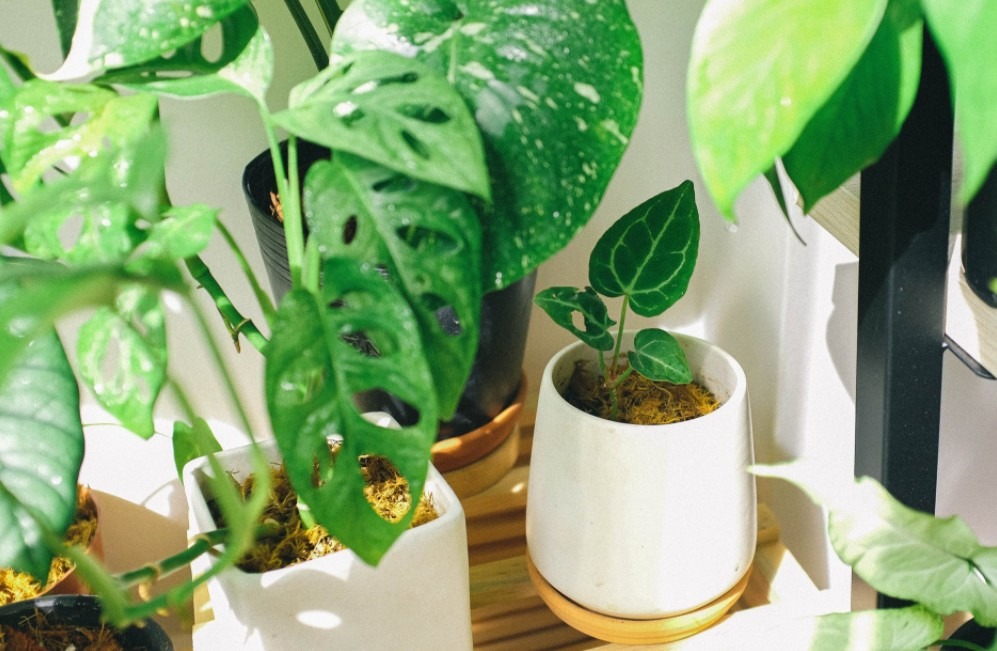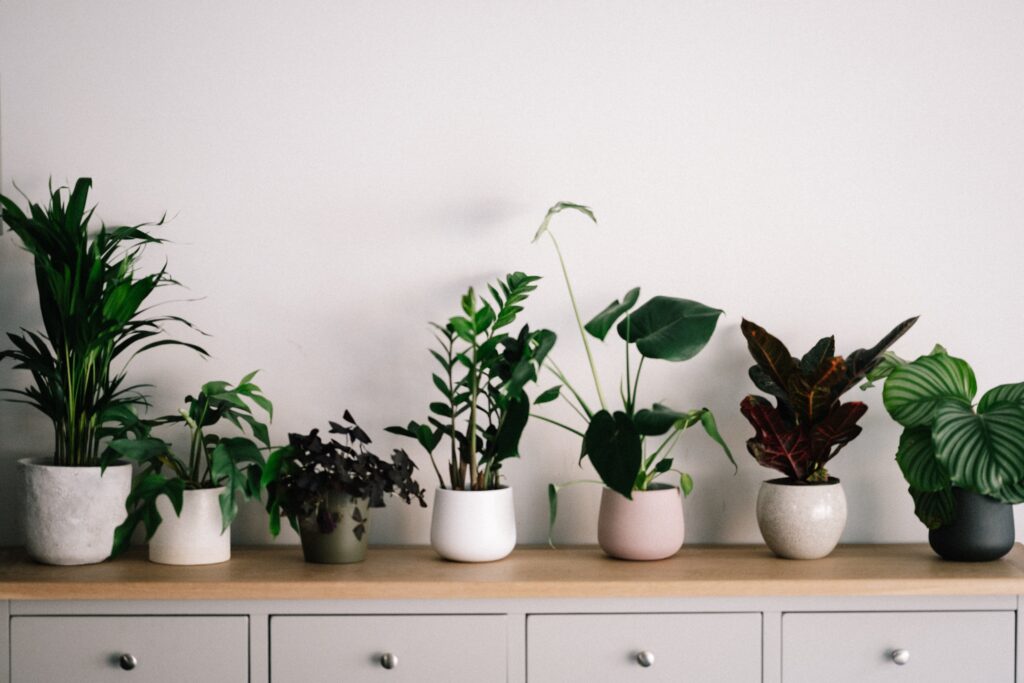We all have the element and ability to nurture, but it’s something that we have to tap into, and some have more difficulty with it than others. If you have met someone who is into gardening and you really don’t understand what the catch is, you’ll never really know unless you try it yourself. Just like people become attached to their children and pets, the same can be said about a person and their plants.
If you’re afraid that you won’t be able to take care of a plant properly, fear no more, because plant care in Sunshine Coast experts can take care of a plant properly, allowing you to feel that sense of nurture that you have deep within you. You can also visit this page to check out the best indoor plant accessories.
Get answers to your questions by checking out Recommended Site.
1. Learn Before you Buy
While it is tempting to go by aesthetics alone, it’s not the smartest thing to do. You have to remember that plants are not mere pots of decor to just make your house look nice. They’re alive! And this is why it’s so important that you do your homework before you commit to any plant, regardless of their size or level of care needed. Read up on the variety of plants available, especially the ones that are suitable for your setting and environment, so that when you do go to buy one, you can be confident in your choice and your ability to care for it.
2. Get an Indoor Grow Tent
If you’re a bit unsure of what kind of environment is best for plants or have pets and children that you’re worried about, then your best bet is investing in a grow tent. Look up the top indoor grow tents so that you’re able to gain a better understanding of what kind of options are available and what their features are as well. They’re good for plants because they don’t allow the harmful UV rays in, and can keep the kids and pets away as well. It helps you have a controlled environment for the plants.
3. Water Properly
This is the step that the majority of beginners struggle with, no matter what kind of advice they get. And it’s also one of the most important steps if you want to keep your plant alive and well. You can look up tutorials to properly walk you through how it’s supposed to be done for each plant. And this matters because different plants require different amounts of water at varying intervals. When all else fails, always remember the rule that it’s always better to underwater than it is to overwater and drown them, just until you understand the exact amount needed.
4. Know When to Fertilize
This too depends on the plant. However, there are a variety of choices when it comes to fertilizers to work with, so it’s important that you learn about what works best for your plant. You can also go down the natural route and opt to make your own fertilizer at home from leftover compost. If you’re going to do this, make sure you do it right so that the plant is getting the minerals and vitamins that it needs.
5. Keep the Dust Away
Your plants need water and sunlight to survive, and if their leaves are covered in the dust then this is a barrier that stops them from getting what they need. Another perspective is that you do need to show your plant some love and affection.
Gently wiping the leaves down and spritzing them with water to freshen them up will really make a difference. They may not be able to speak or respond, but they’re alive and aware.
6. Let there be Light
All plants need light, it just really depends on how much light they need. Either way, you need to pay attention to how much exposure you give them to the sunlight so that they’re not getting too much or too little at any given time. If you find that there are days where isn’t much sun, then you can always invest in a bulb that can do the job for them.
7. When to Repot
When you get a new plant, you cannot expect it to stay in the same pot forever, especially if it is growing. Another factor is that plants do need new soil every once in a while, so you will have to learn when and how to repot your plants, and don’t get lazy about this, because they need their space and they need their nutrients and fertilizer from the fresh soil.
As you can see from the points mentioned here, it doesn’t take that much to take care of a plant properly. But what you will get for sure is a sense of accomplishment and you’ll understand that you are capable of nurturing a living entity just the way it’s mean to be cared for.
How Plants Help the Environment
In addition to the human need for plants for survival, our environmental systems depend on them for their long-term stability and sustainability. In addition to releasing oxygen into the atmosphere and absorbing carbon dioxide, plants also provide animals with nutrition and control the water cycle, all of which are necessary for life to exist on Earth.
Clean the Air
Our bodies get most of our oxygen from plants. This is so that plants may transform energy into oxygen and energy in the form of sugar, both of which are consumable by other living organisms. Plants do this by using sunlight, water, and carbon dioxide.
The huge levels of carbon in the atmosphere caused by the burning of fossil fuels and industry are one of the biggest hazards to the planet. However, by storing and utilizing carbon through photosynthesis, plants contribute to a decrease in the amount of carbon in the atmosphere. There is no denying that plants are effective natural air cleansers; the larger and leafier a plant is, the better it is at absorbing carbon dioxide and producing more oxygen.
Regulate Water Resources
The Earth’s surface is continuously being covered by water due to the water cycle, and vegetation controls stormwater runoff. Following a storm, vegetation such as plants and trees absorbs the excess runoff, saving cities money on maintenance and pumping costs.
To maximize the capacity of soil and vegetation to absorb, distribute, and otherwise store stormwater volume, green infrastructure plays a role in the planting of vegetation across a town or city. This has the potential to provide extra environmental, social, and economic advantages.
Additionally, plant uses the soil to release water into the atmosphere. As a result, about 10% of the water evaporates back into the atmosphere, regulating and replenishing the Earth’s water supply for the following rainfall and maintaining the natural flow of energy.
Cultivate Biodiversity
Building safe habitats for animals is essential to maintaining biodiversity. Unfortunately, animal population disruption caused by urban growth has had an effect on our ecology. The best strategy to avoid disturbing animal populations is to provide a natural haven for wildlife. For wildlife to thrive despite being in an encroached region, green spaces must be created, especially in surrounding towns. Parks and other green spaces highlight potential connections between biodiversity preservation and food production.
Provide a Source of Energy
Healthy plants can serve as a food and energy source for people. In both our environment and food, plants are crucial. They give us the fiber, vitamins, minerals, and nutrition we require to live. Additionally, we require plants to feed the farm animals that we use to produce meat and dairy.
Plants can also save energy by saving money on building heating and cooling. The need for electricity grids can be decreased, for instance, by planting a tree on the west side of your building. It lessens the impact of the sun’s heat on the temperature of the outside walls and roof, which means that heating and cooling your home will use less energy, has a less negative impact on the environment, and ultimately cost you less money.
Reduce the Effects of Climate Change
The use of fossil fuels and climate change are two of today’s biggest natural problems. Carbon dioxide levels in the atmosphere and the air we breathe increase because of burning fossil fuels. But at this point, plants become important. Oceanic and terrestrial plants on Earth store carbon dioxide from the atmosphere to reduce the number of polluting gases in the atmosphere.
You can plant trees like yellow poplars, silver maples, oaks, pines, and blue spruces that lessen pollutants and fight global warming. We all need to be aware of how important plants are to our ecosystem.
Health Benefits of Houseplants
The luxuriant blossoms and leaves of indoor plants are the only thing that may enhance the attractiveness and comfort of our homes and workplaces. cubicles, restrooms, kitchens, and bedrooms Really, there isn’t a room that a houseplant can’t brighten up. You only need to add water and light to create a flourishing indoor oasis. Amazingly, bringing plants into your house can also have significant positive effects on your health.
Indoor plants promote psychological and physical health, keeping you happier and healthier. These benefits include:
- lifting your mood
- reducing weariness
- reducing tension and fear
- increasing focus and productivity at work
- enhancing recovery and pain tolerance
- reducing headache frequency by enhancing air quality
- reducing respiratory and skin conditions brought on by the dry air
Several houseplants are capable of absorbing dangerous chemicals from man-made materials that are known to release pollutants into the air in your home, place of employment, or school, including formaldehyde, benzene, and trichloroethylene. Furthermore, researchers found that houseplants can cut down on indoor dust by up to 20%. Houseplants serve as effective air purifiers.


